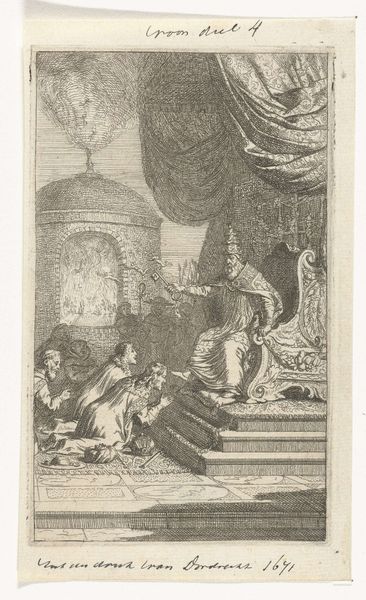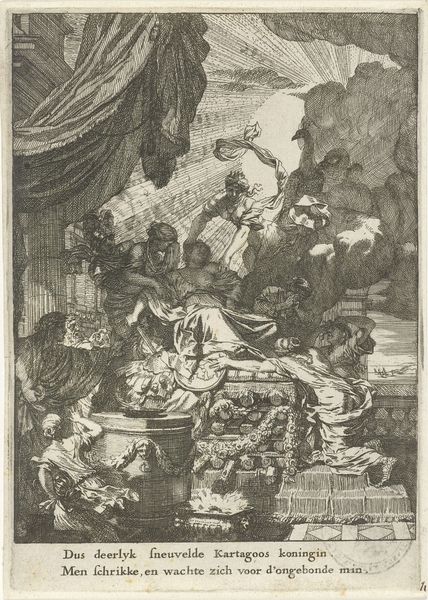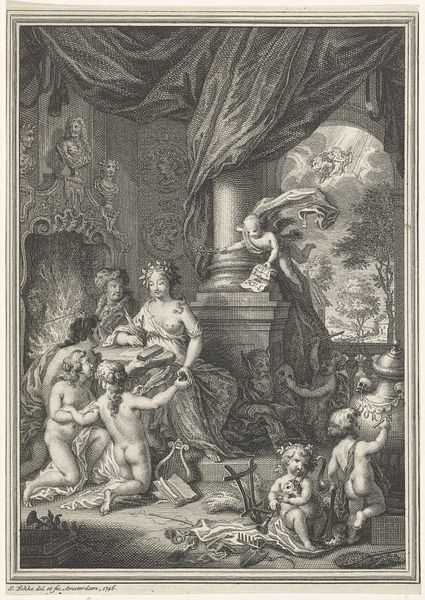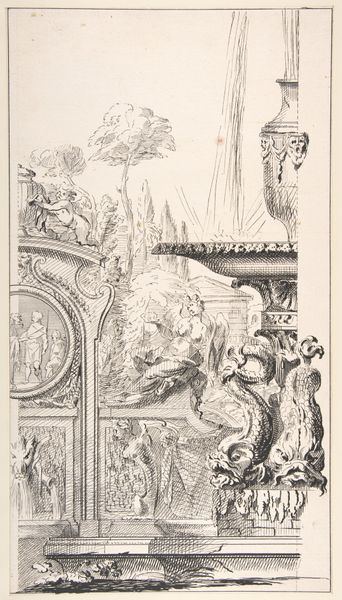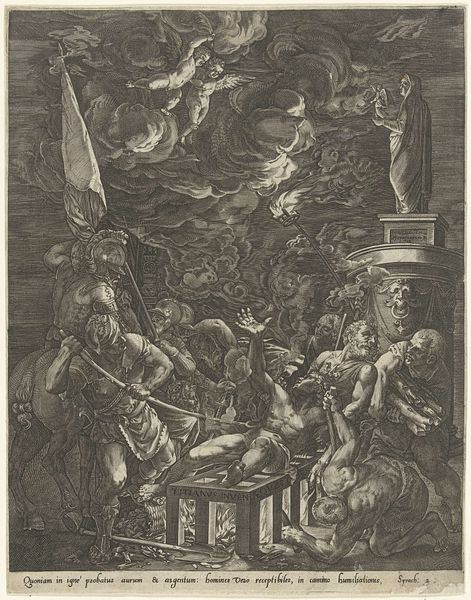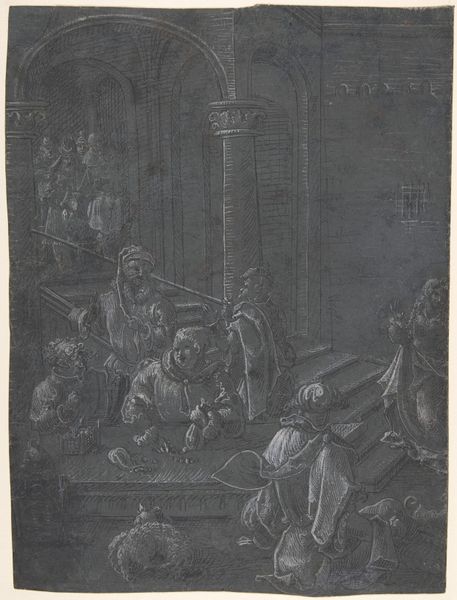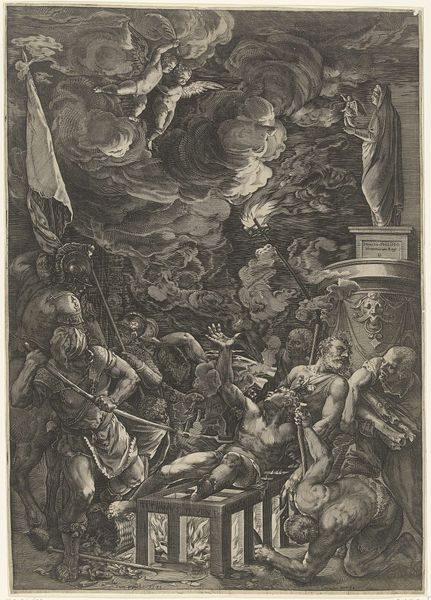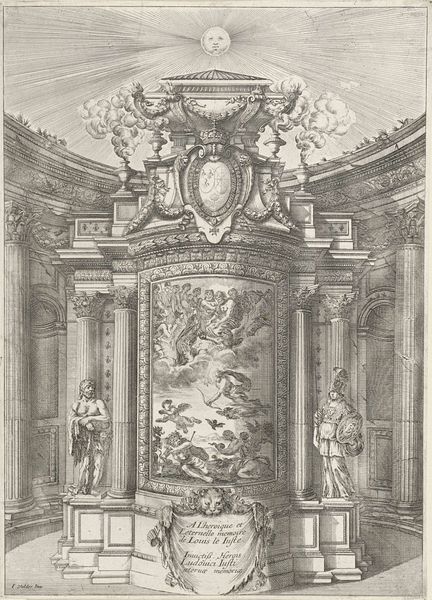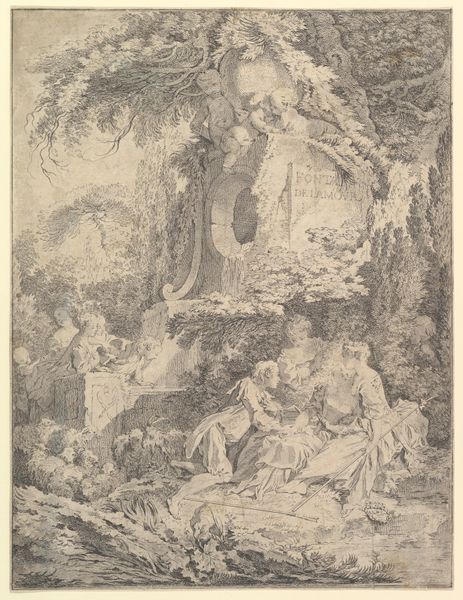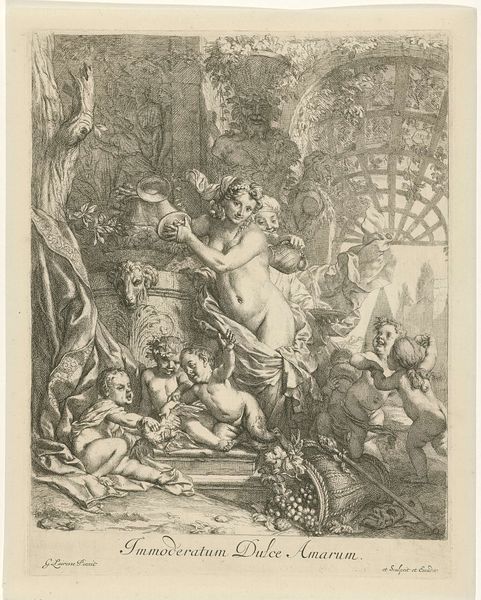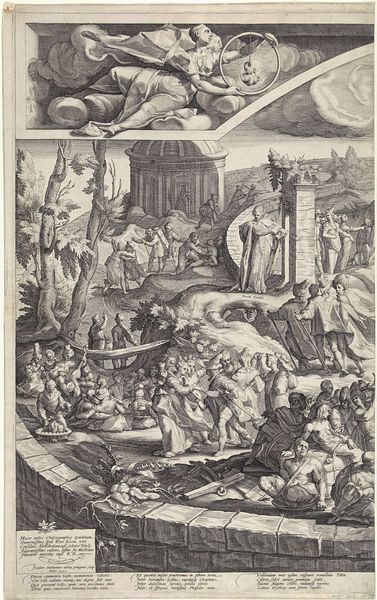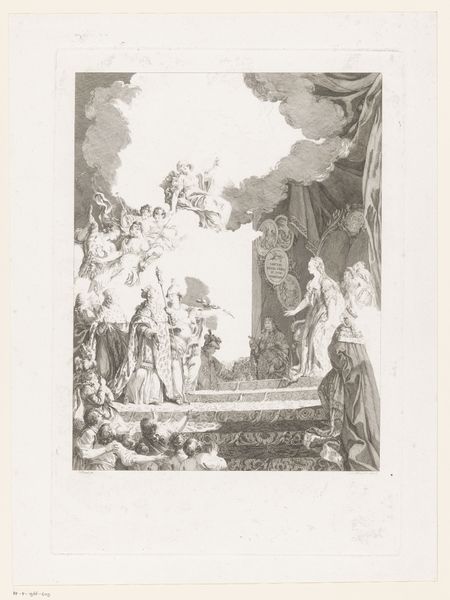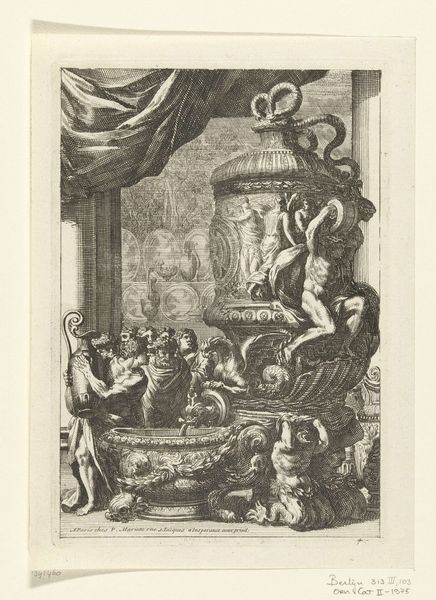
Dimensions: height 235 mm, width 183 mm
Copyright: Rijks Museum: Open Domain
Curator: This is "The Tomb of Mary Magdalene," an engraving made between 1670 and 1724, now residing here at the Rijksmuseum. Jacob Gole created it. It strikes me as such a theatrical take on a religious subject. Editor: My first impression is somber, but hopeful. There's a lot of iconography relating to mortality, but that light falling on Mary Magdalene offers something more, a transcendence. Curator: It's interesting how Gole presents Magdalene, not as a grieving figure, but almost in repose. This really shifts it away from straightforward history-painting towards something more allegorical, don't you think? And look at the architectural ruins incorporated into this almost cavernous space. There's that theatricality I mentioned, a constructed environment representing, perhaps, a transformation. Editor: Definitely. The skull beneath her hand, the skeleton figure—common symbols in memento mori. The reclining Magdalene recalls traditional depictions of Venus, layering pagan symbolism over Christian themes. Her association with repentance and spiritual awakening connects to that broader allegory of rebirth. Curator: Precisely! Gole's Baroque style is evident in the dramatic lighting, almost creating two distinct zones—the darker areas laden with death symbols contrasted against the radiant figure of Mary Magdalene. But note how he integrates elements reminiscent of Mannerism too. That complexity certainly elevates it beyond simple devotional imagery. Editor: Absolutely, it isn't a simple one-to-one correspondence between symbol and meaning. Look at the steps on the left; people seem to climb those stairs into the deep recesses of this symbolic place, looking for answers. So very evocative and mysterious! Curator: This work serves as a reminder that interpretations evolve along with social and religious currents. By visually layering multiple time periods and movements, it's reflective of both Baroque aesthetic concerns as well as earlier religious debates about the role and image of the Magdalene. Editor: This engraving shows us that symbolic language always carries cultural weight. Understanding that history helps reveal enduring ideas about transformation, regret, and divine love. Curator: I appreciate seeing how the art of the period interacted so creatively with philosophical ideas through accessible imagery, helping to define the social discourse around mortality, gender, and repentance. Editor: And for me, Jacob Gole creates a timeless space through a symbolic language that continues to invite us to contemplate our relationship with our morality and potential transformation.
Comments
No comments
Be the first to comment and join the conversation on the ultimate creative platform.
